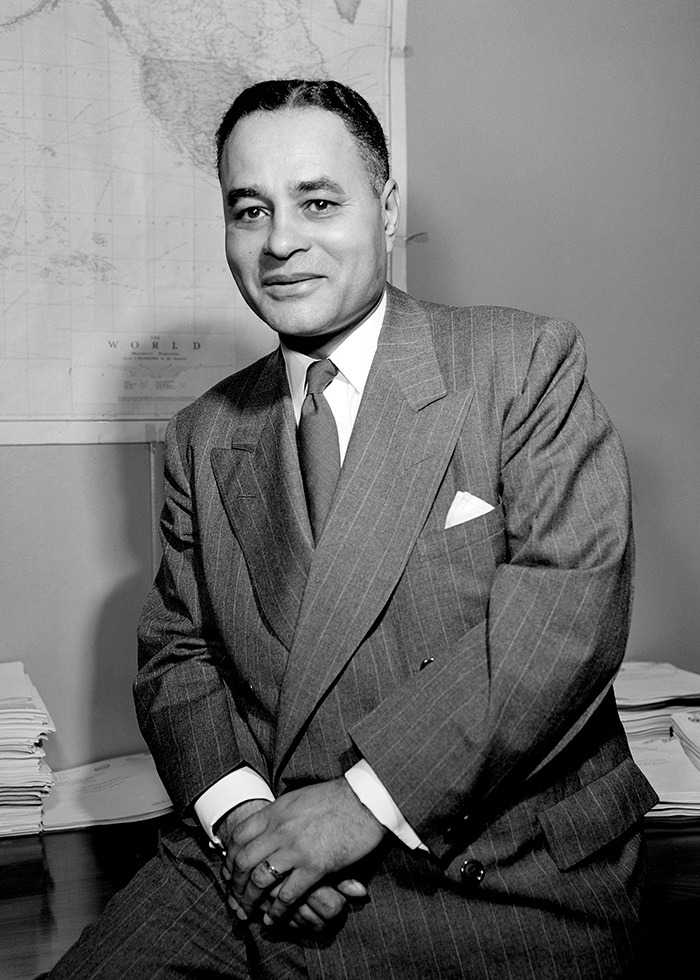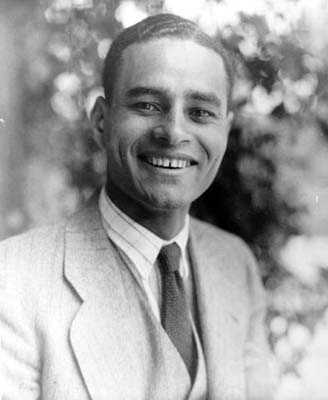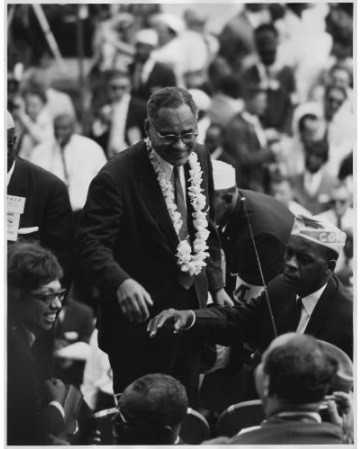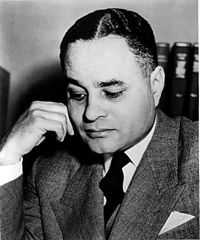Dr. Ralph Bunche was a man of many firsts. He was the first African-American to:
- Be awarded a Nobel Peace Prize
- Serve as a desk officer at the State Department
In addition, Dr. Bunche was a part of America’s most important intelligence first: The Office of Strategic Services (OSS) — the predecessor of today’s CIA. During World War II, Dr. Bunche worked with the OSS to provide intelligence about developments in African territories.

Dr. Ralph Bunche, OSS veteran and Nobel Prize winner, is one of the most influential African-American figures in the first half of the 20th century.
The Best and the Brightest
Ralph Bunche was born on August 7, 1903, in Detroit, Michigan. His father, Fred, was a barber, and his mother, Olive, was an amateur musician. Both of his parents were in poor health, and when Bunche was 12 years old, they passed away. Following their deaths, Bunche’s grandmother moved him, along with his two sisters, to Los Angeles, Calif., to live with her.
Bunche was a very intelligent child and a gifted athlete, winning prizes and awards throughout his educational career. He was the valedictorian of his graduating class at Jefferson High School in Los Angeles. Bunche went on to study international relations on an athletic scholarship at the University of California at Los Angeles. He played varsity basketball on championship teams, and graduated at the top of his class in 1927.
He continued on to Harvard, earning his master’s degree in political science in 1928. During the next several years, he taught at Howard University while also working toward a doctorate.
At the beginning of his career, Dr. Bunche was active in education and the civil rights movement. He chaired the department of political science at Howard University and went on to teach at Harvard. In 1936, Dr. Bunche wrote “A World View of Race,” based on his experience working with the Institute of Race Relations at Swarthmore College and previous research. Dr. Bunche was also a member of President Franklin D. Roosevelt’s “Black Cabinet,” which was consulted on minority issues by the administration. While Dr. Bunche is revered as an educator and civil rights activist, he is perhaps best known for his contributions to the United States Government.

A young Ralph Bunche.
Joining the War Effort
In September 1941 — with the attack on Pearl Harbor and World War II looming in the future — Dr. Bunche was recruited by the Office of the Coordinator of Information (COI), a fledgling intelligence organization. He joined the COI as a senior analyst specializing in African affairs. In 1942, the COI became the Office of Strategic Services. Dr. Bunche moved to the OSS Research and Analysis Branch in 1943 to serve as an analyst and chief of the Africa division. Dr. Bunche was responsible for following developments on British territories in Africa, including what later became Kenya, Uganda, Tanzania, Zambia, Zimbabwe, Malawi, South Africa, and Namibia.
Dr. Bunche became a well-known authority on this African issues. In fact, he was often called upon by policymakers to answer questions about Africa’s stability and possible Axis plotting. Dr. Bunche also authored manuals about the political and economic conditions in African territories so U.S. troops stationed in the region could properly plan and take precautions.
As World War II began to draw to a close, Dr. Bunche realized that he could use his knowledge of Africa to make a difference elsewhere. In 1944, he transferred to the State Department, becoming its first African-American desk officer. In 1945, he became the head of the Division of Dependent Affairs and helped draft the United Nations Charter in San Francisco.

Dr. Ralph Bunche at the 1963 March on Washington, where Martin Luther King, Jr. delivered his famous “I Have a Dream” speech.
Negotiating Peace for the United Nations
Dr. Bunche is probably best known for his role as the U.N. mediator during the Arab-Israeli conflict in the late 1940s.
Originally, the United Nations chose Sweden’s Count Folke Bernadotte to mediate the conflict with Bunche as his chief aide. In 1948, Bernadotte and Dr. Bunche traveled to the Middle East and settled on the island of Rhodes to begin negotiations; however, Bernadotte was assassinated in September and Dr. Bunche took over.
Dr. Bunche negotiated the armistice while playing pool with the Israeli and Arab representatives. During the next several months, Dr. Bunche convinced the Israelis and Arabs to accept the 1949 Armistice Agreements.
In 1950, Dr. Bunche was the first African-American to be awarded a Nobel Peace Prize for the United Nation’s success in containing the Arab-Israeli war.
President John F. Kennedy also recognized Dr. Bunche’s efforts in the Middle East by awarding him the Medal of Freedom in 1963.
I’ve seen so many instances of man’s ability to do the right thing. I see them every day. If man can do these things, he can do better things.

From an interview in Psychology Today, April 1969.
Dr. Ralph Bunche
Over the next few decades, Dr. Bunche continued his work with the United Nations, directing operations in Suez, the Congo, and Cyprus. Throughout his career, Dr. Bunche remained an active supporter of the civil rights movement. He participated in the 1963 March on Washington, where Martin Luther King, Jr. delivered his famous “I Have a Dream” speech.
In 1971, Dr. Bunche retired from the State Department because of health reasons and on December 9, 1971 at the age of 68, he passed away. He is buried in Woodlawn Cemetery in the Bronx, N.Y.

